The moments that brought us to the moon, presented by Getty Images.
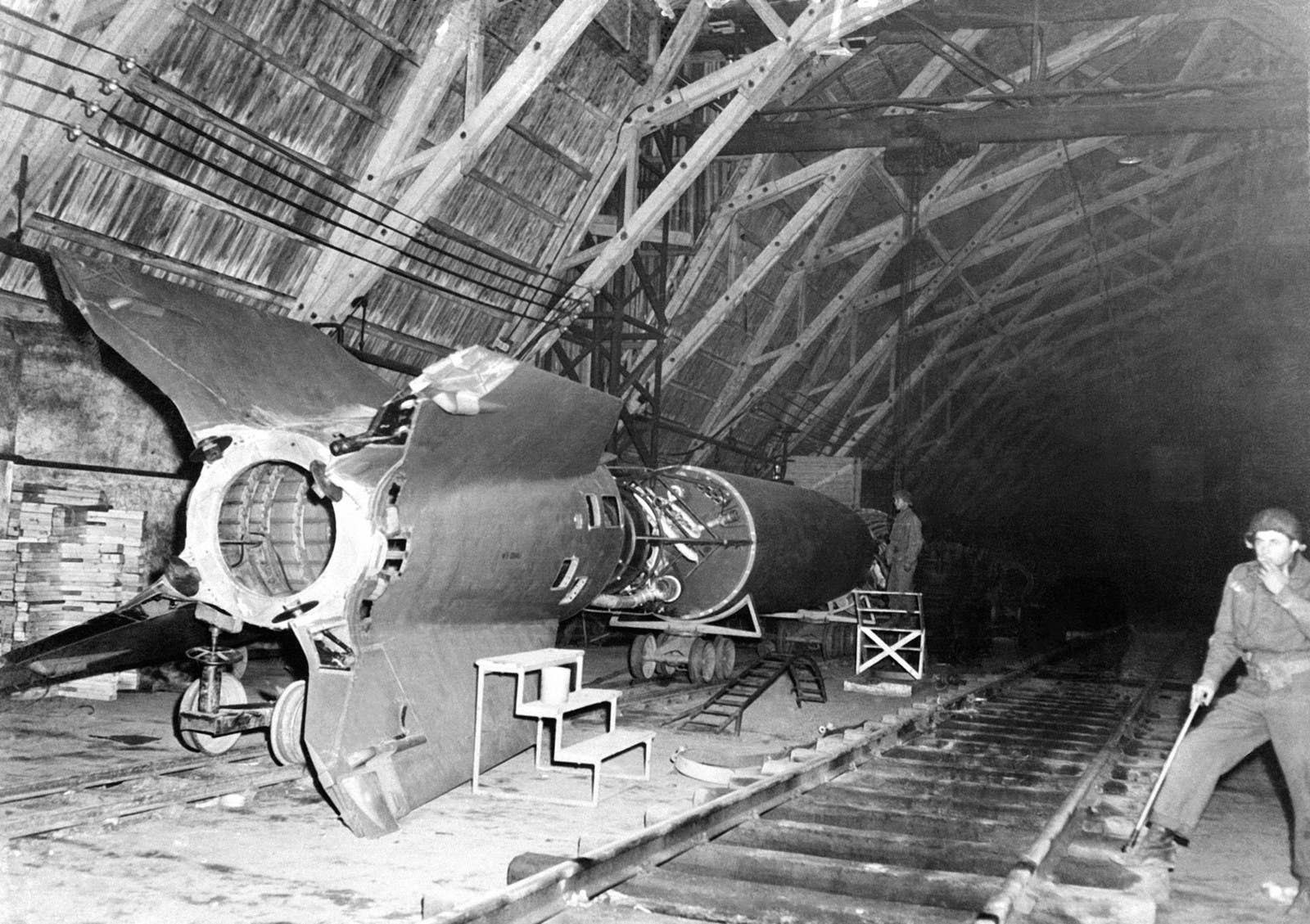
US soldiers discover a disassembled V-2 rocket in Berlin, 1945. The V-2 was the world's first long-range guided ballistic missile and one of the Nazis' secret weapons during World War II. Following the end of WWII, Allied forces rushed into Germany to capture its technology and builders.
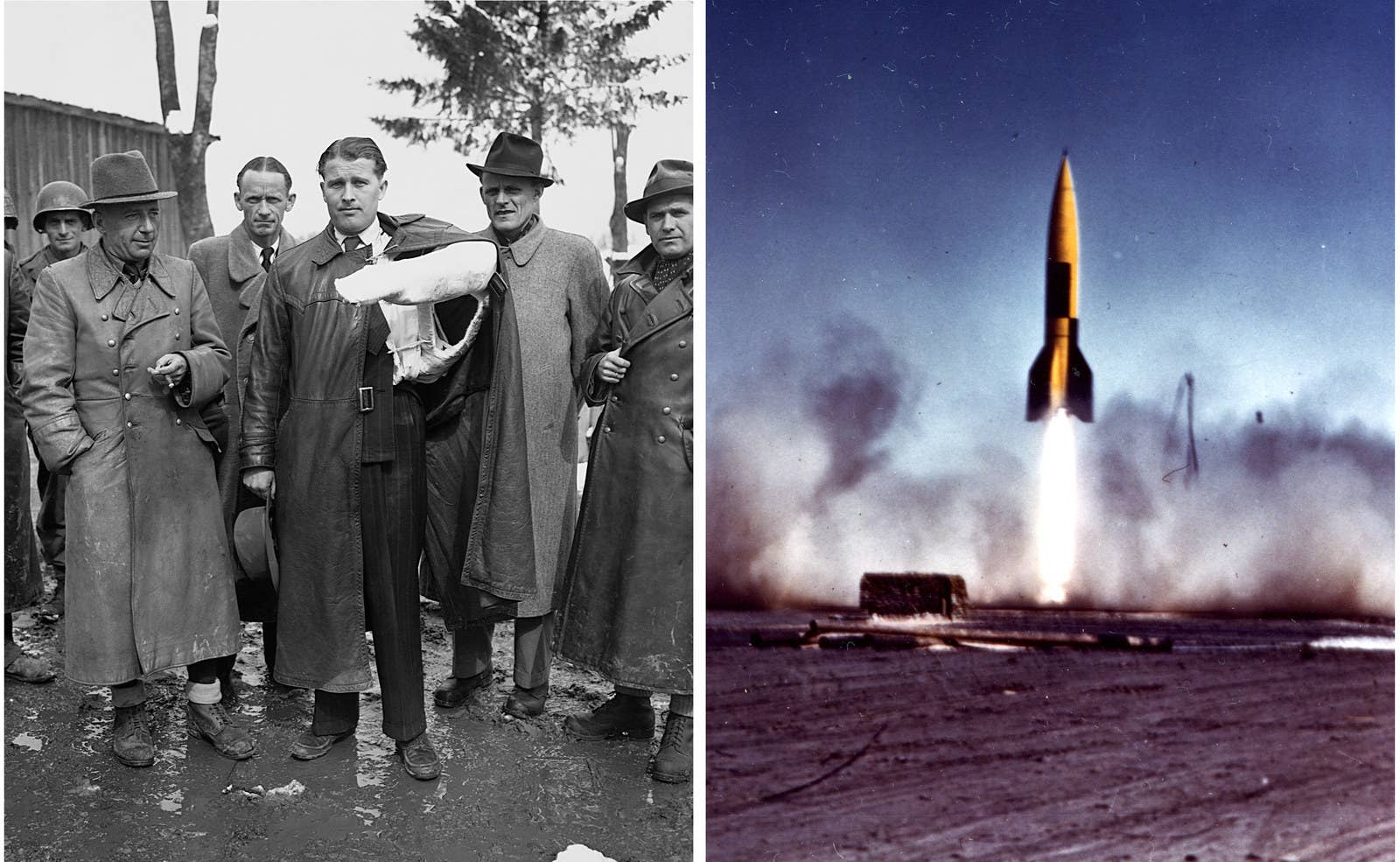
Left: German rocket scientist Wernher von Braun (center) and other members of the German V-2 rocket development team after their surrender to US forces in Austria, on May 3, 1945. Their subsequent work for the United States brought American rocket science to the forefront almost overnight. Right: The captured German V-2 rocket takes off in a test held at White Sands Proving Ground, New Mexico, on May 10, 1946.

Military commander and founder of the US Air Force's space and ballistic missile program, Major General Bernard A. Schriever, observes a test firing at Rocketdyne's Santa Susana Field Laboratory, near Los Angeles in 1957.
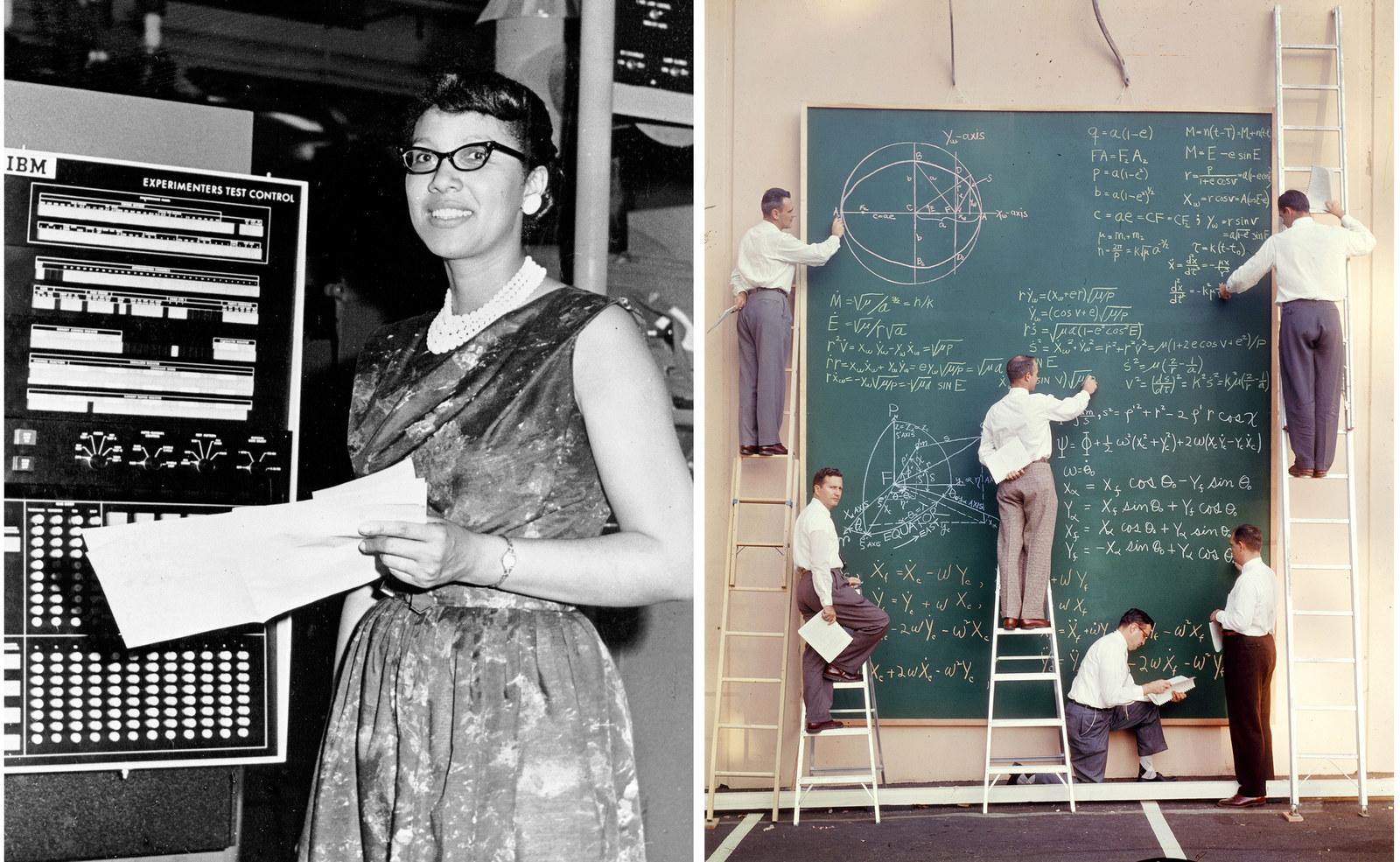
Left: Melba Roy, head of the group of NASA mathematicians known as "computers," on March 24, 1952. Roy's computations helped produce orbital element timetables that were crucial to landing a person on the surface of the moon. Right: Six unidentified scientists use ladders and a large chalkboard to work out equations for satellite orbits in 1957.
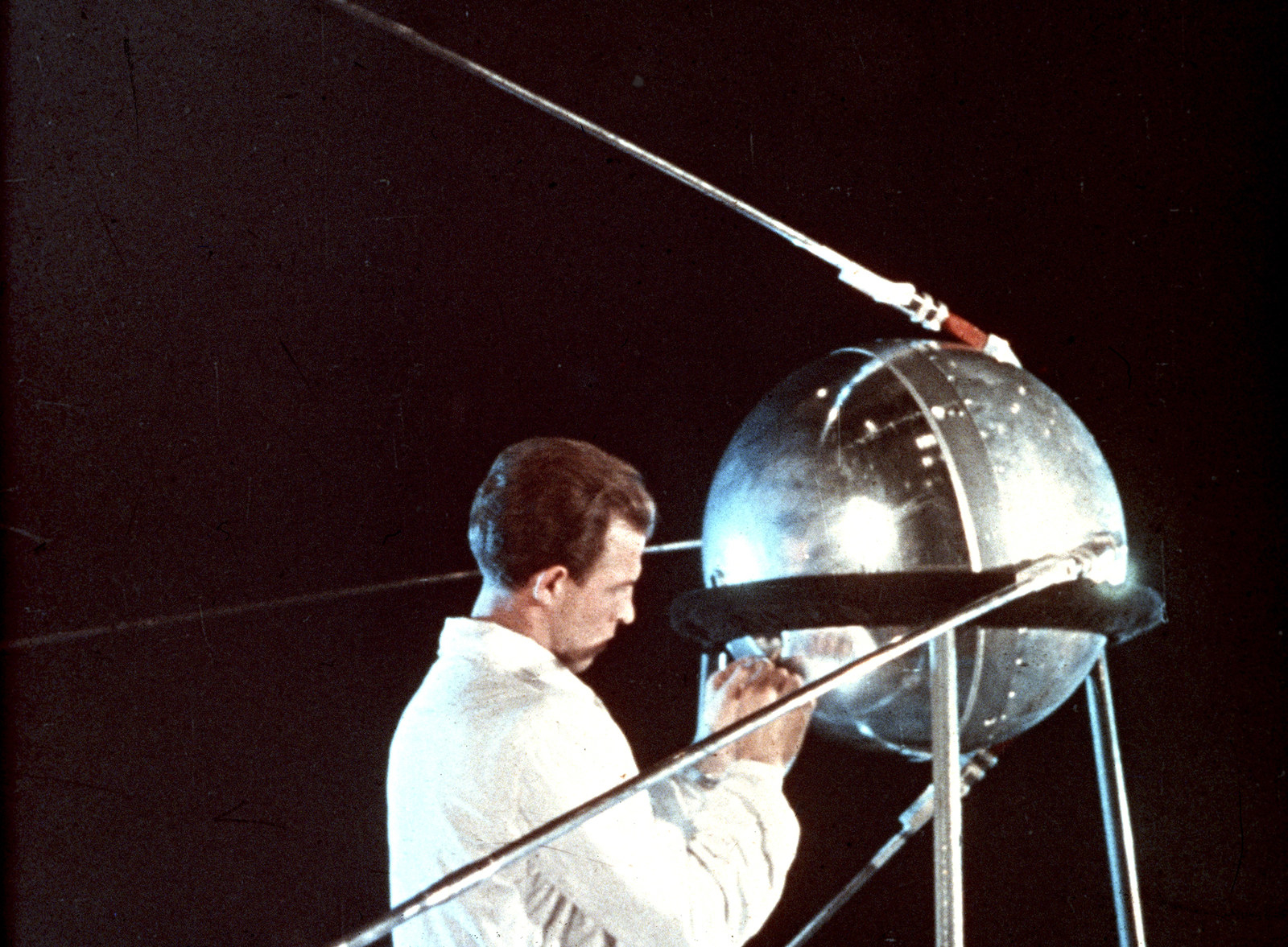
A Soviet technician works on the Sputnik 1 satellite in 1957.

Left: A laboratory dog wears a space suit and oxygen mask during preparation for space travel at a Soviet base in Moscow in 1957. Right: Malyshka, a Russian space dog, poses here in its snug-fitting space suit with a transparent space helmet beside it. Meanwhile, the newly launched Soviet satellite, Sputnik II, circles the earth, carrying what is reported to be a female husky dog, the first living being to roam space.

A monkey is fitted with an oxygen mask during a face test at the US Air Force Wright Air Development Center, near Dayton, Ohio, on Jan. 20, 1956.
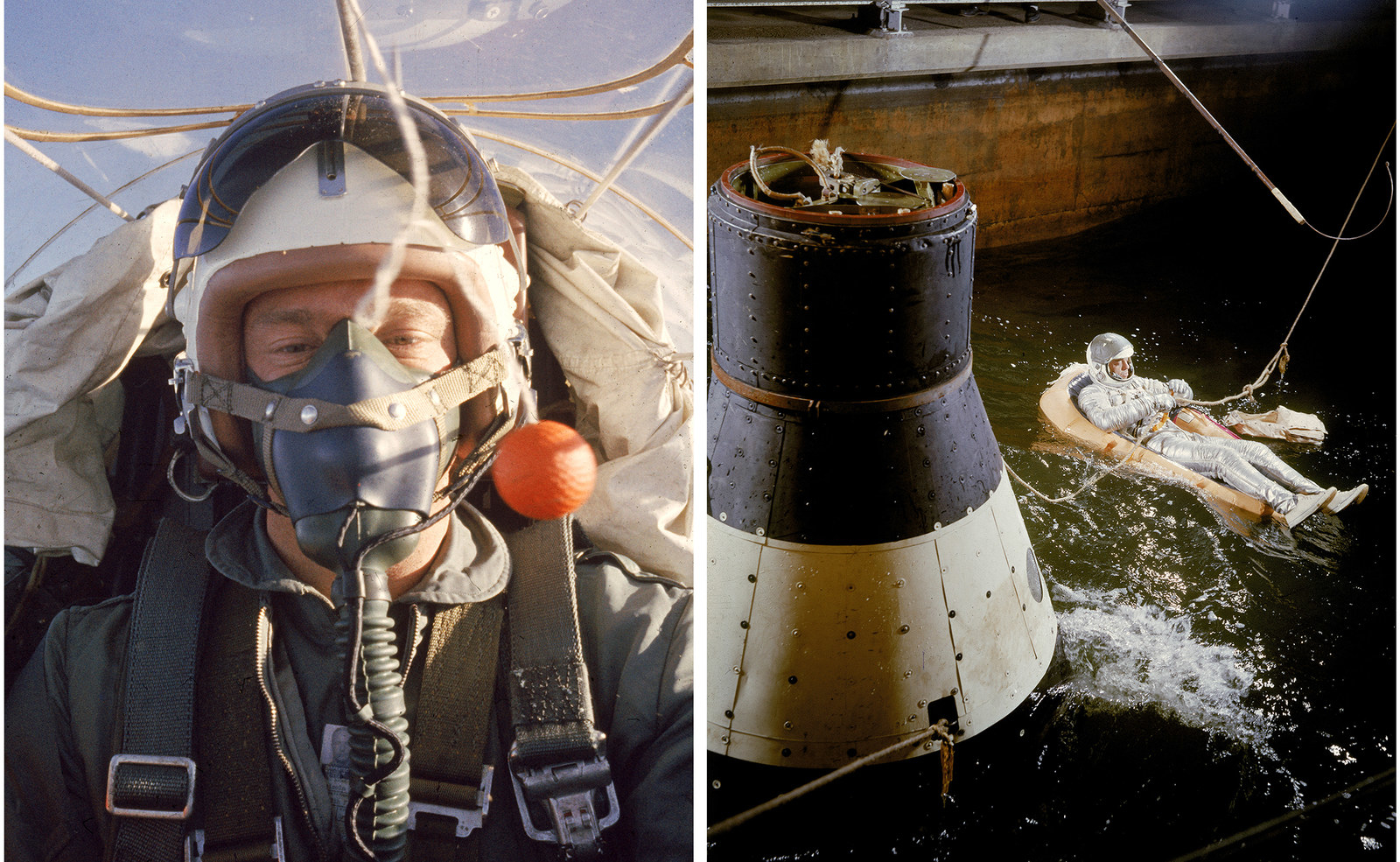
Left: An orange golf ball floats before Mercury project astronaut Scott Carpenter as he undergoes weightlessness training in an F-100F Super Sabre aircraft in 1959. Right: An unidentified project Mercury astronaut undergoes water training in 1959.
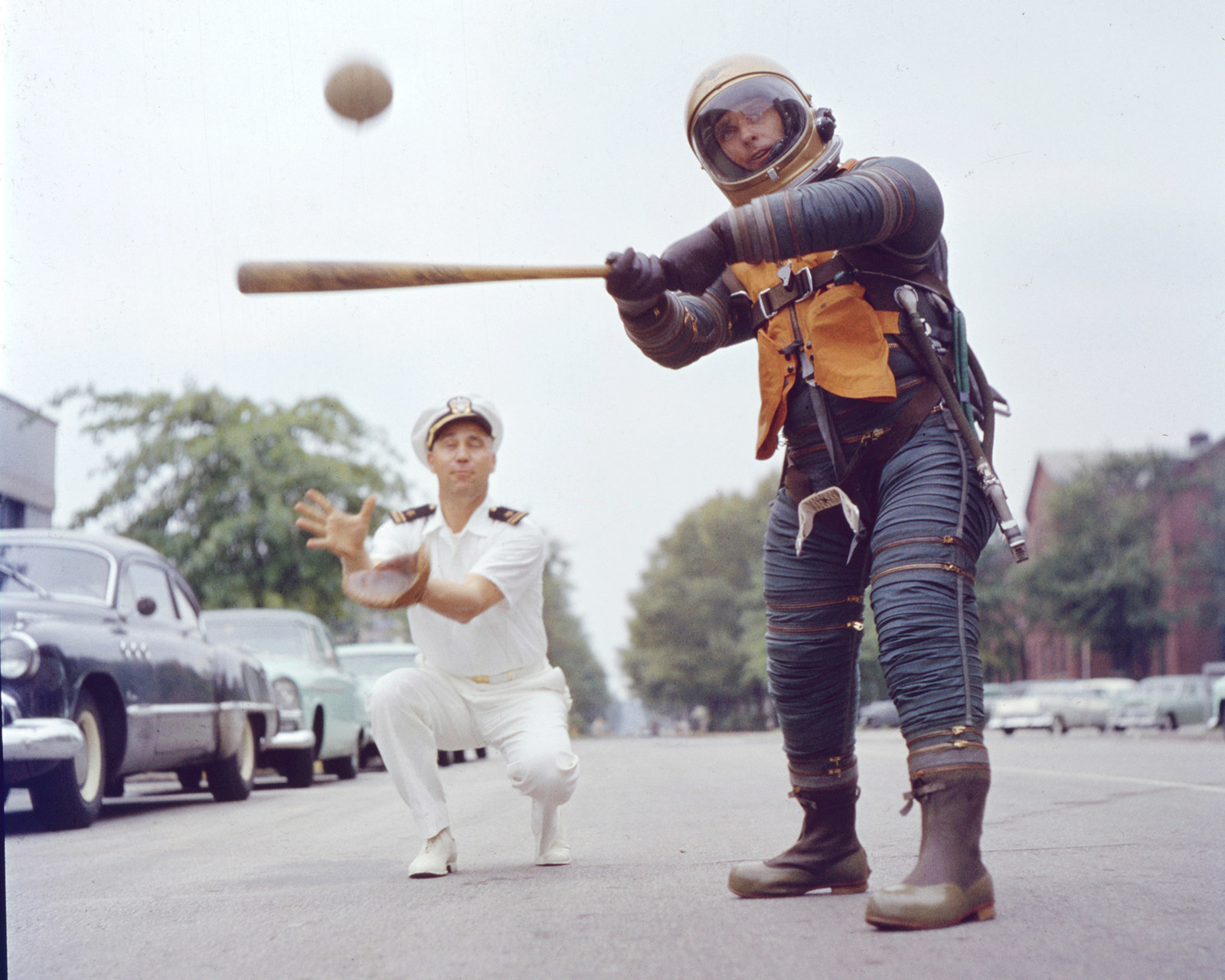
An unidentified Navy test subject swings a bat during a game of softball in order to demonstrate an inflatable space suit's flexiblity in 1958.
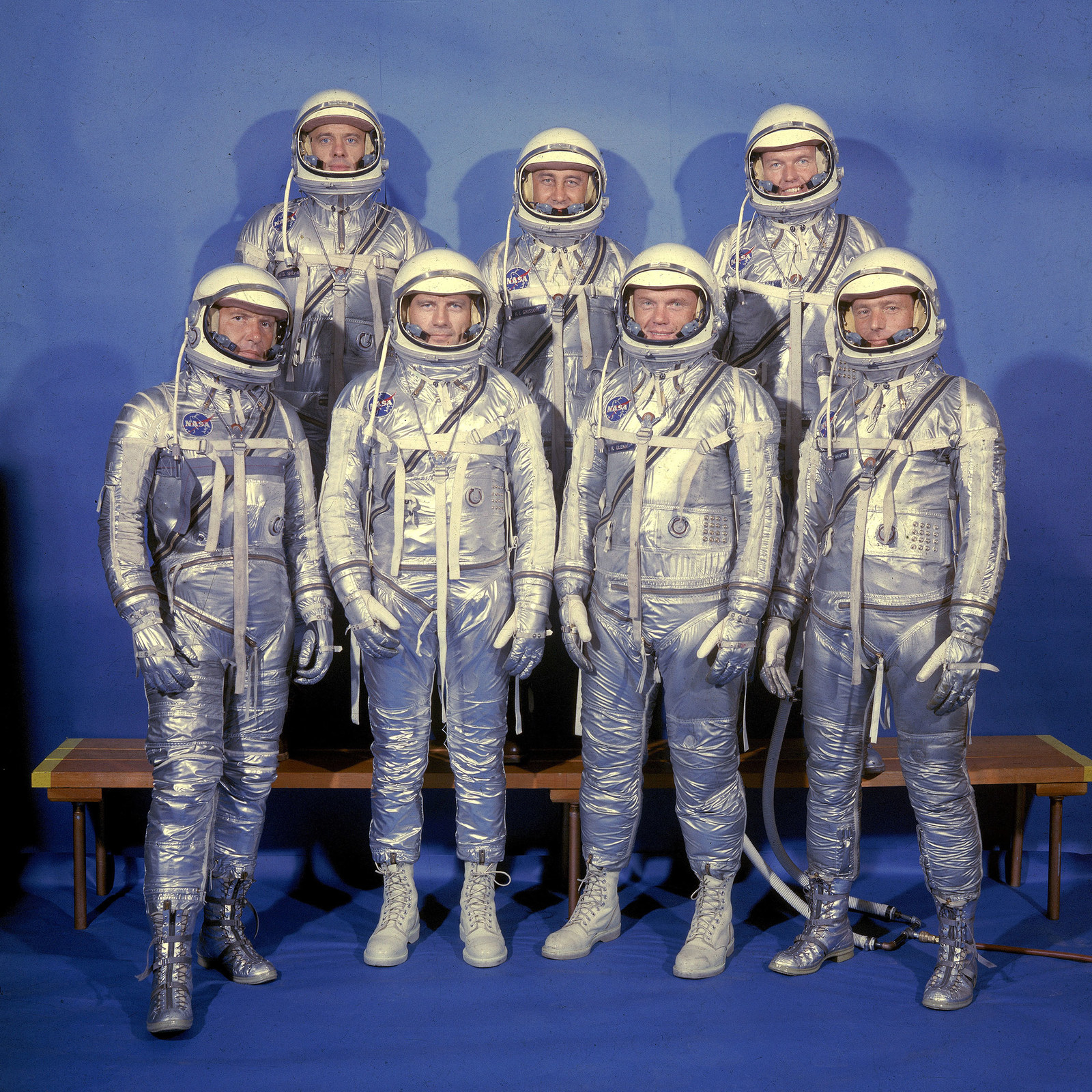
Project Mercury astronauts stand for a group portrait in their pressure suits, 1959. They are, back row from left: Alan Bartlett Shepard Jr., Gus Grissom, and Gordon Cooper; front row from left: Wally Schirra, Deke Slayton, John Glenn, and Scott Carpenter.
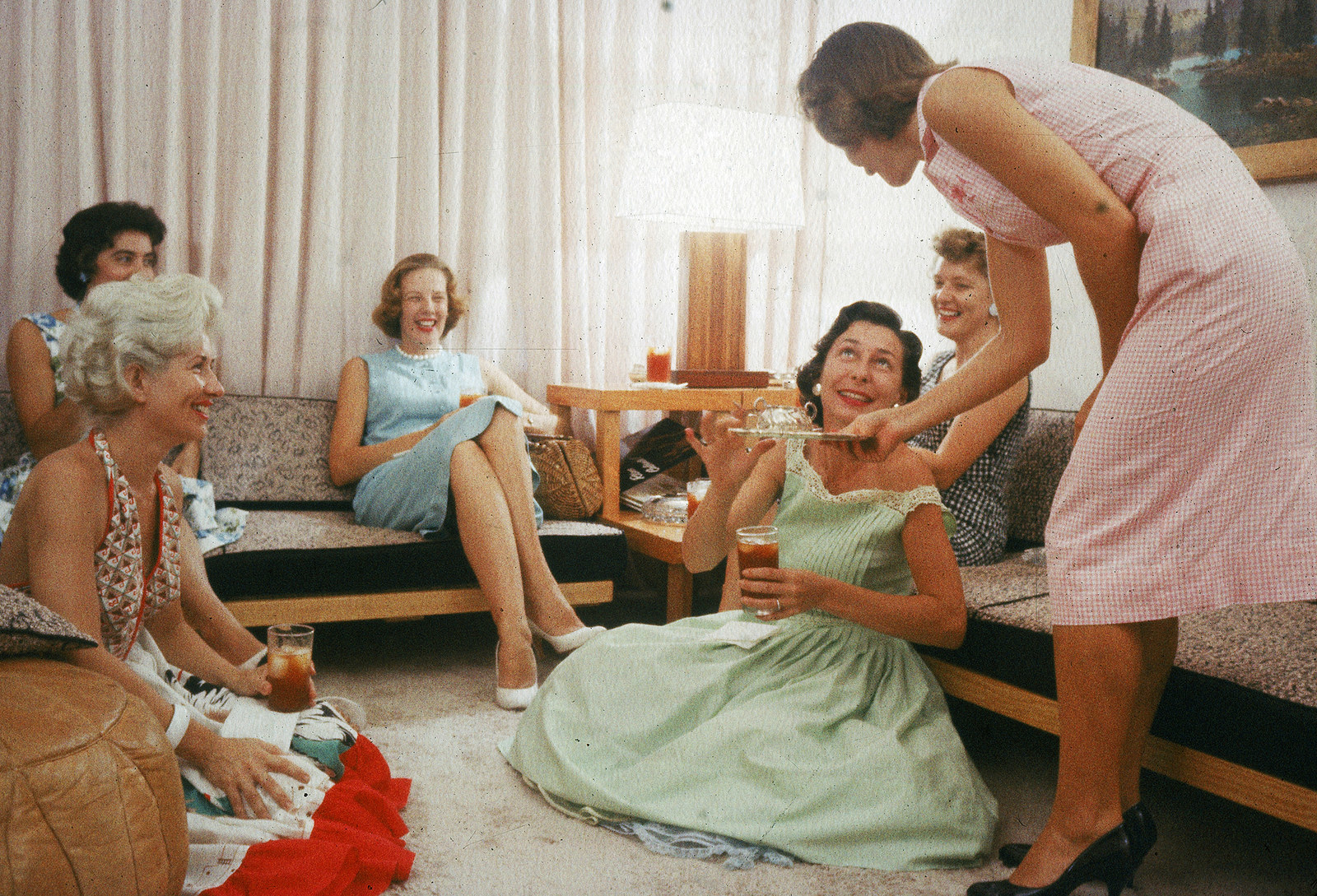
A group of the wives of Project Mercury astronauts relax and talk together in Virgina, 1959. They are, clockwise from lower left: Rene Carpenter, Annie Glenn, Jo Schirra, Betty Grissom (on couch at right), Marjorie Slayton (on floor at right), and Trudy Cooper (standing with serving tray).

From left: Soviet cosmonauts Vladislav Volkov, Viktor Gorbatko, and Anatoly Filipchenko look over their camera equipment during a break from training for the Soyuz 7 mission in 1969.
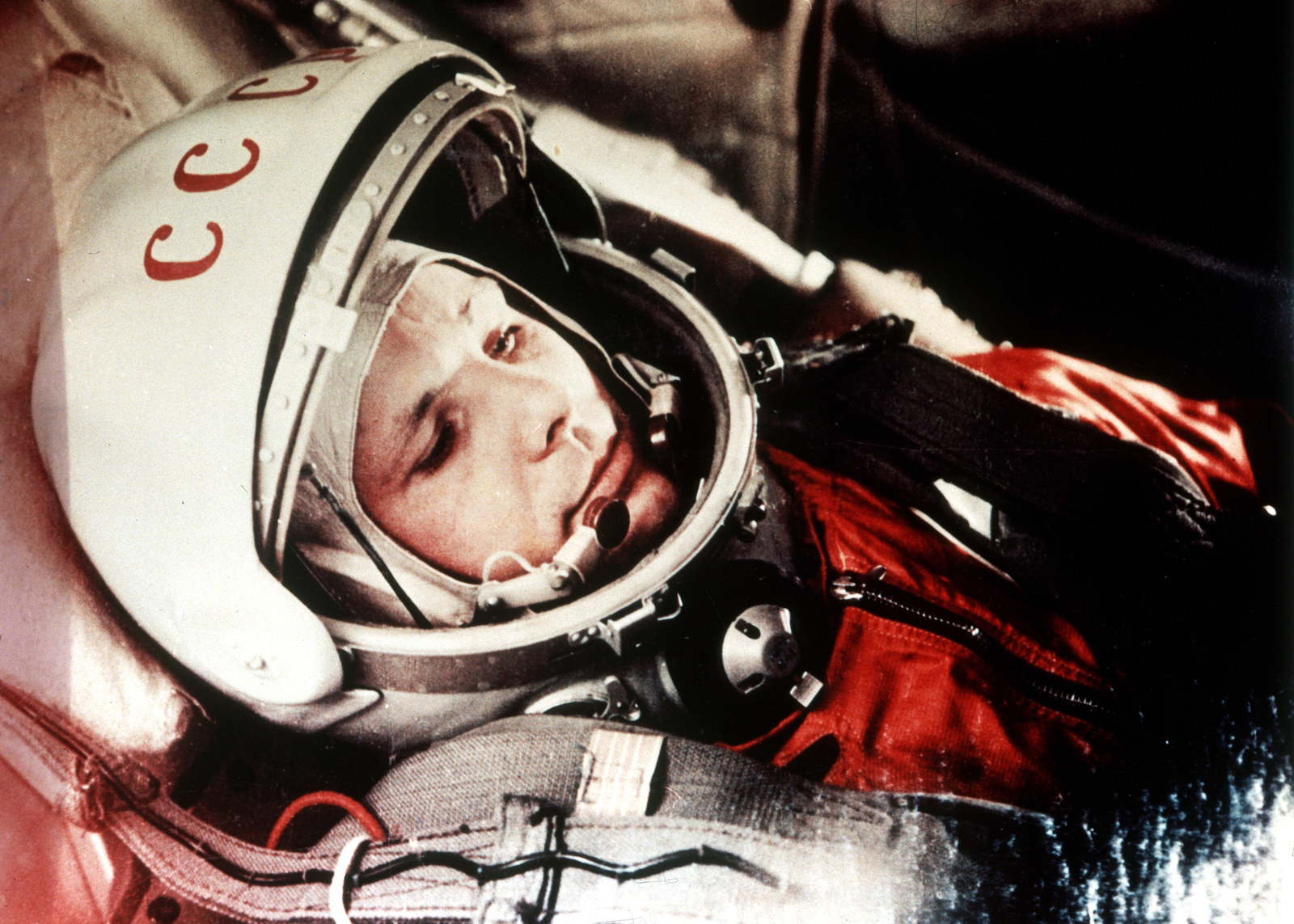
Soviet cosmonaut Yuri Gagarin prepares for the launch of Vostok 1 on April 12, 1961, before becoming the first human to enter space.

Yuri Gagarin and other Soviet cosmonauts examine the first pictures of the moon taken by the Lunik 1 space probe in 1961.
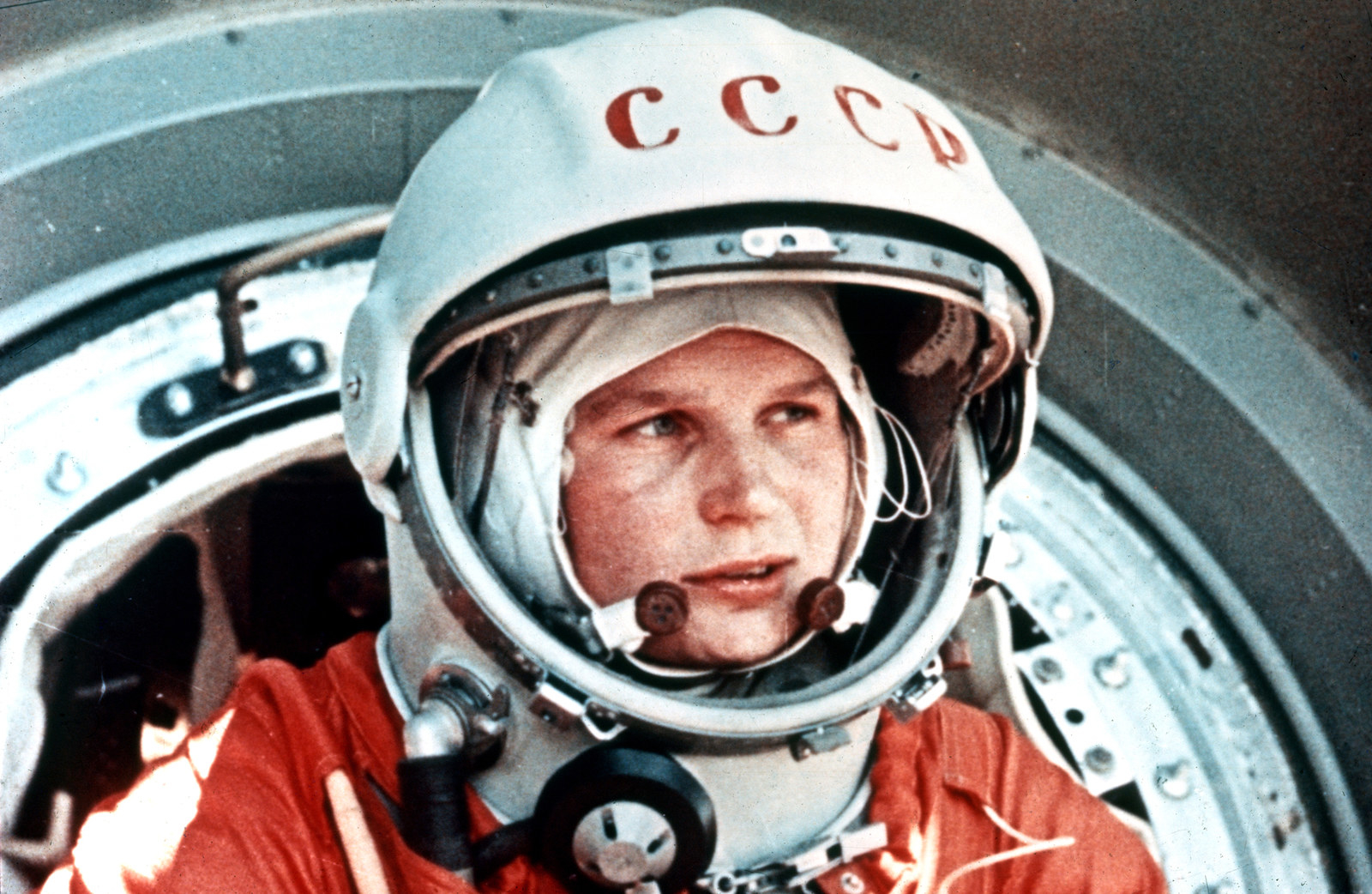
Soviet cosmonaut Valentina Tereshkova in front of the Vostok 6 capsule in June 1963, before becoming the first woman in space.
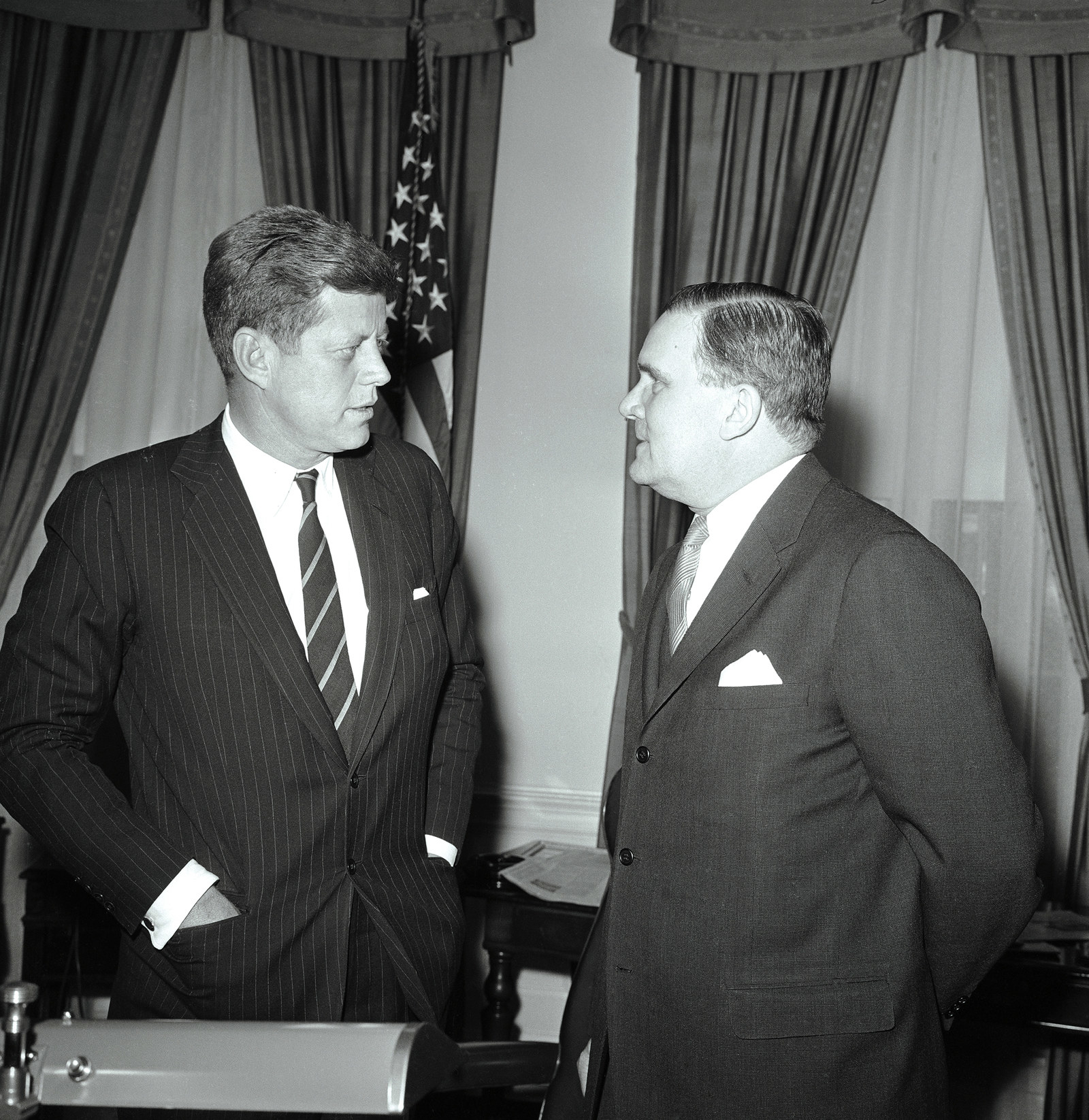
President John F. Kennedy meets with the new administrator of NASA James E. Webb at the White House on Jan. 30, 1961.
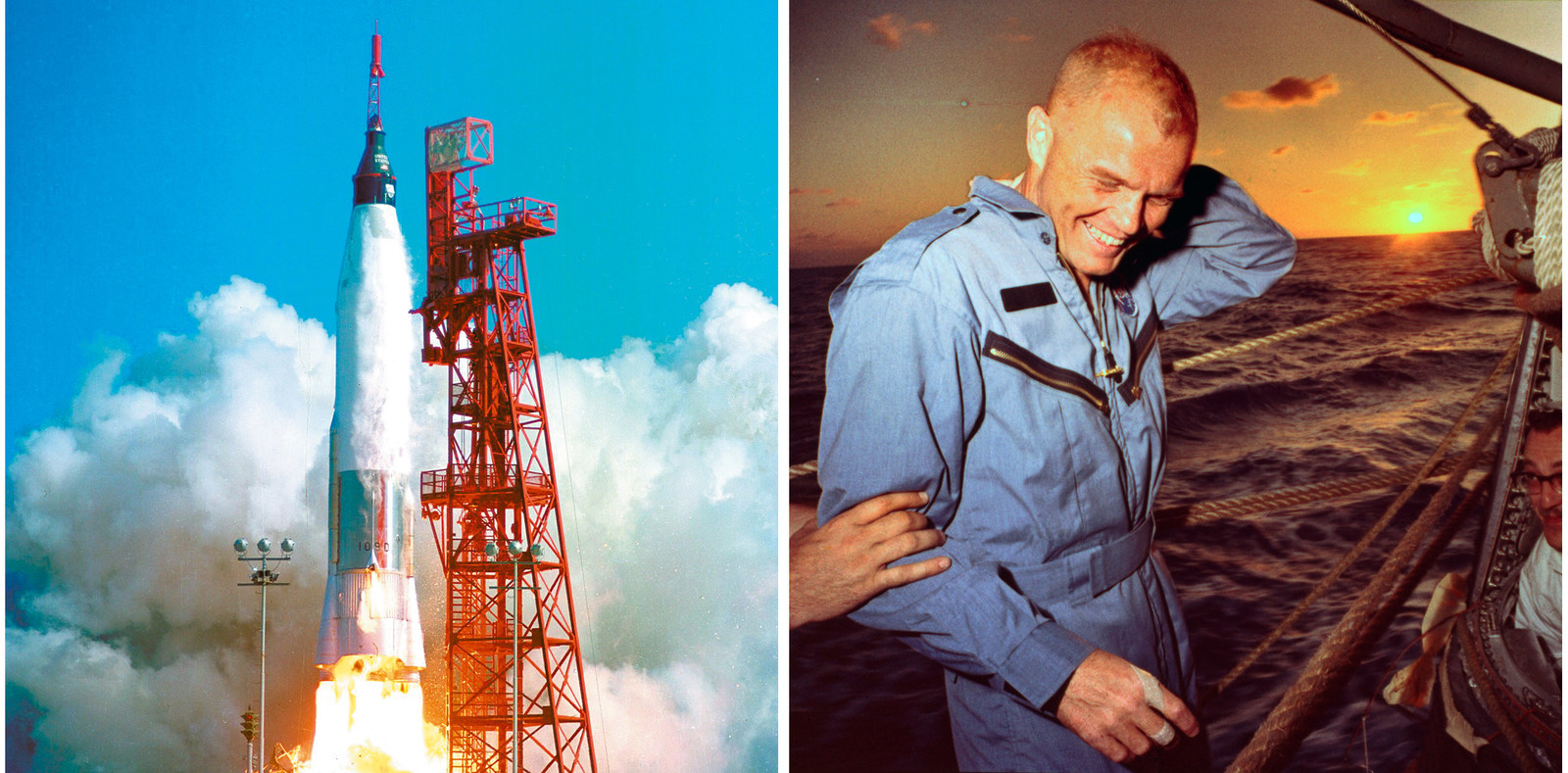
Left: The rocket carrying the Mercury "Friendship 7" capsule with US astronaut John Glenn aboard blasts off in Cape Canaveral, Florida, on Feb. 20, 1962, for the first US manned orbital flight. Right: Lt. Col. John Glenn boards a rescue ship after completing his orbital flight.
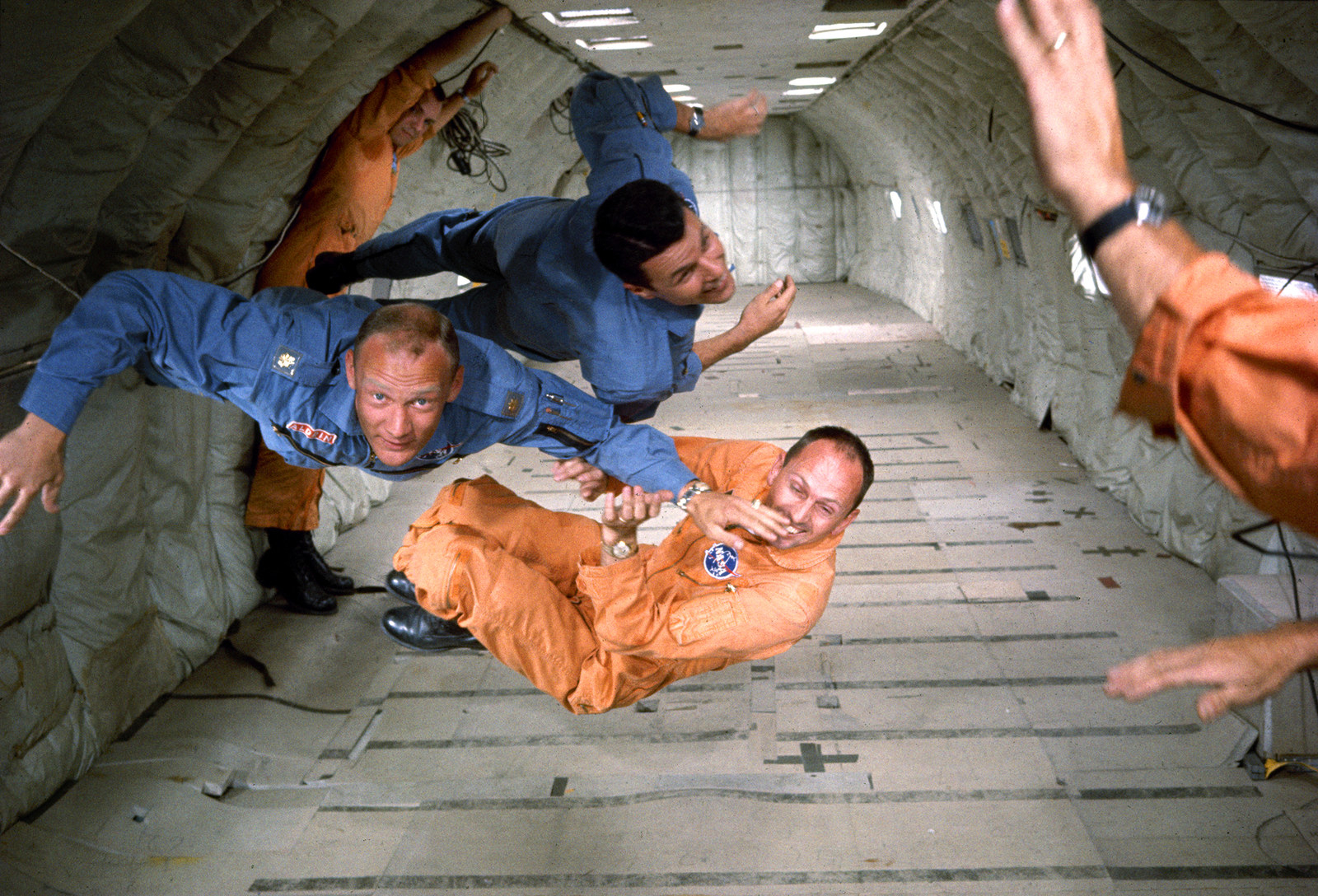
American astronauts Buzz Aldrin (left, in blue), Charles Bassett (top, in blue), and Theodore Freeman (bottom, in orange), along with several technicians, experience weightlessness in a reduced-gravity aircraft as part of their NASA mission training in 1964. Theodore Freeman was killed that same year in T-38 jet and was the first NASA casualty during the Space Race.
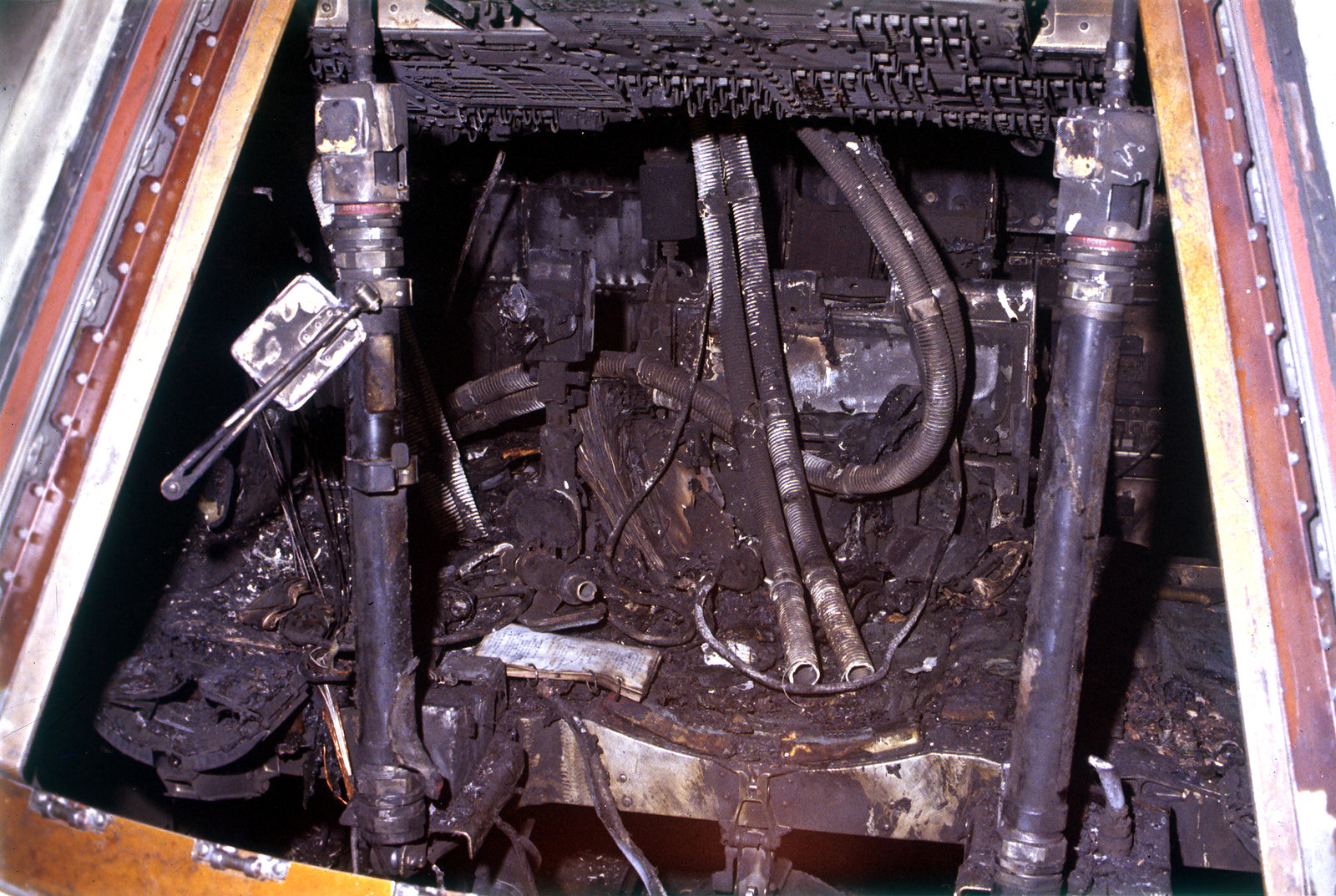
The Apollo 1 capsule is seen charred after a fire inside killed all three astronauts onboard on Jan. 27, 1967. Gus Grissom, Edward H. White, and Roger B. Chaffee were scheduled for launch in just three weeks after the tragedy took place.
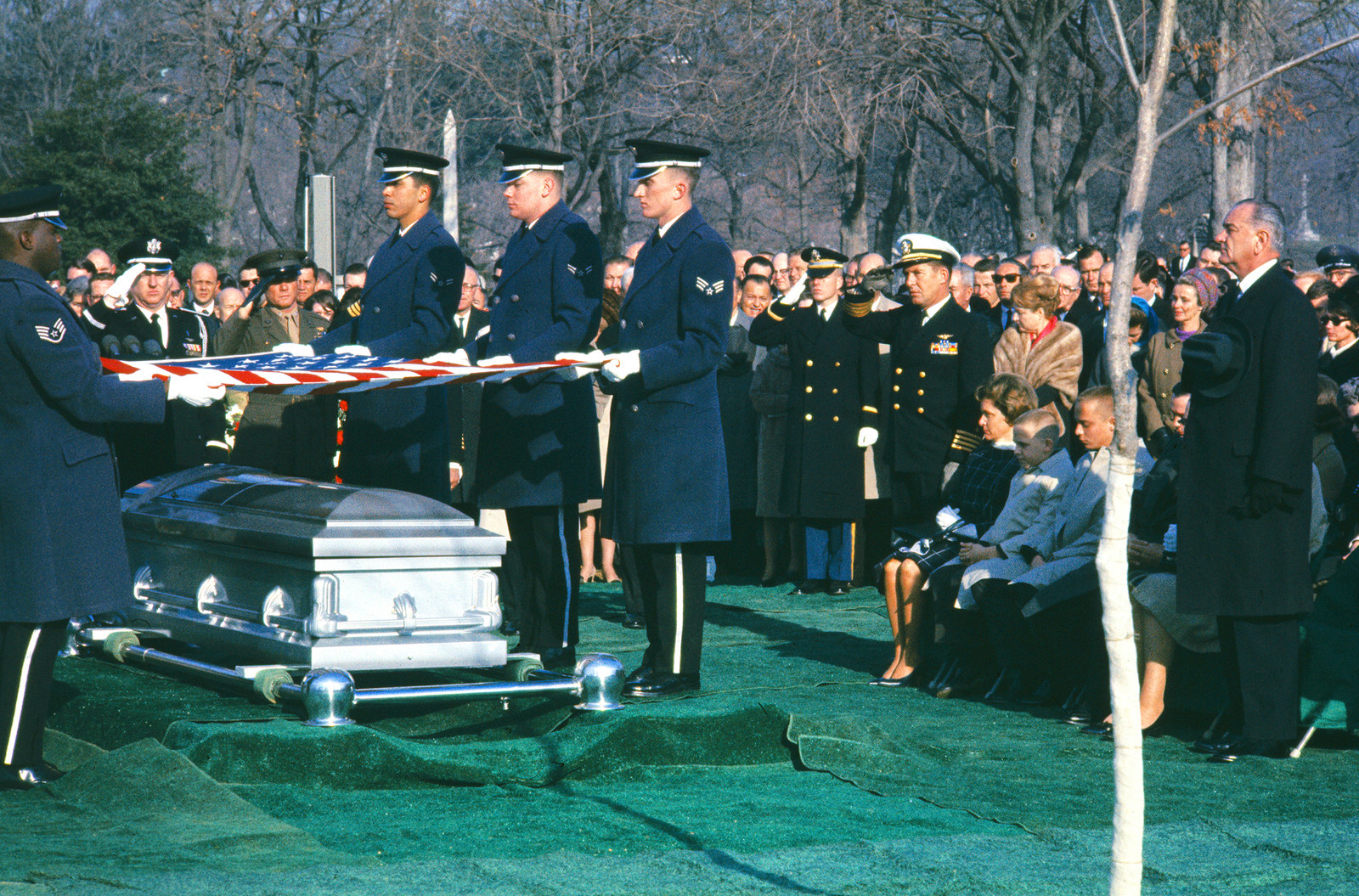
Astronaut Gus Grissom is buried at Arlington National Cemetery on Jan. 31, 1968.
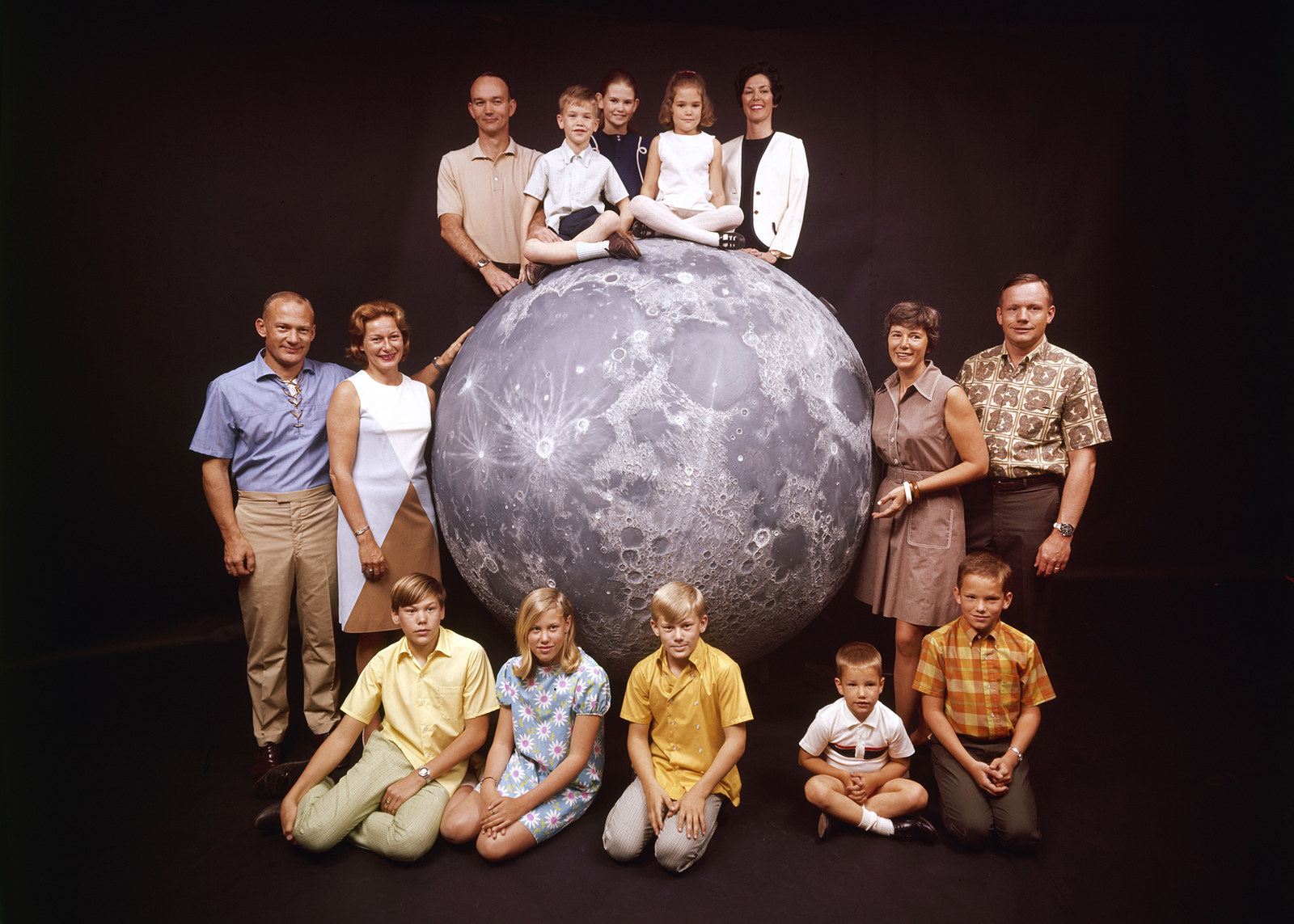
NASA's Apollo 11 astronauts pose with their families on a model of the moon in March 1969.

Apollo 11 launches on July 16, 1969.
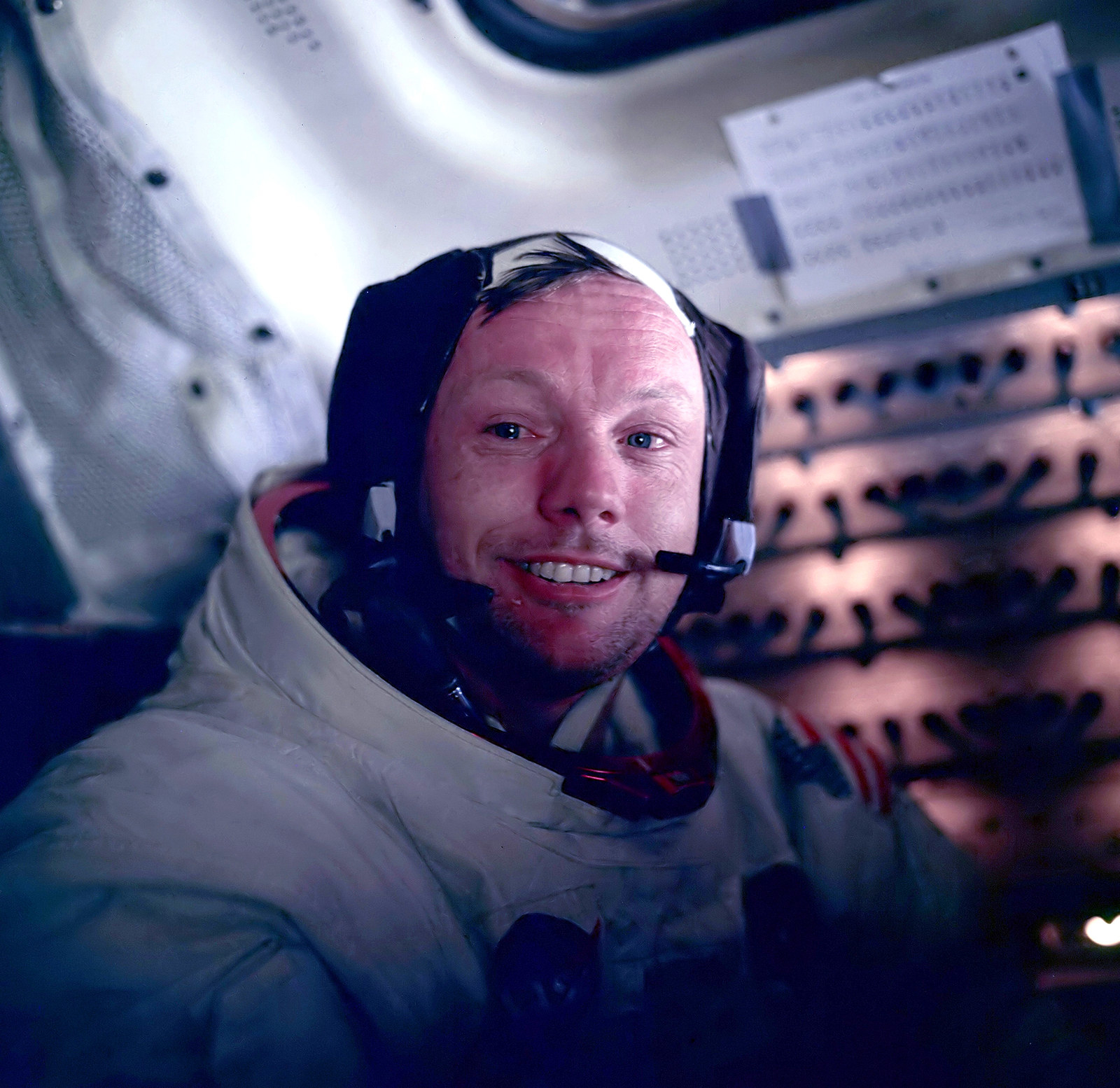
Astronaut Neil Armstrong holds back tears after first witnessing the surface of the moon during the Apollo 11 space mission.
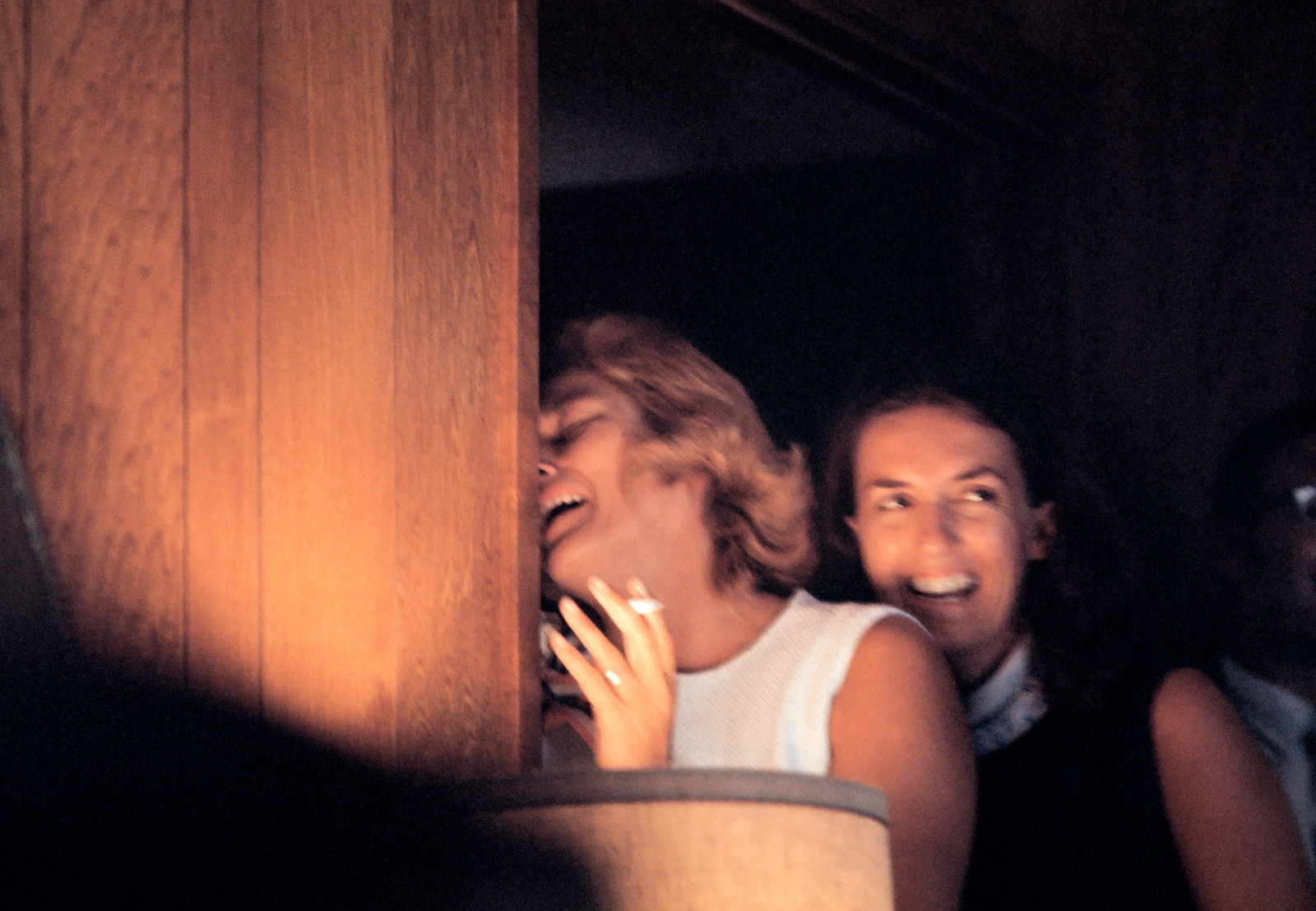
Joan Aldrin, wife of Apollo 11 astronaut Buzz Aldrin, expresses relief as she watches the television broadcast of her husband's successful mission to the moon.
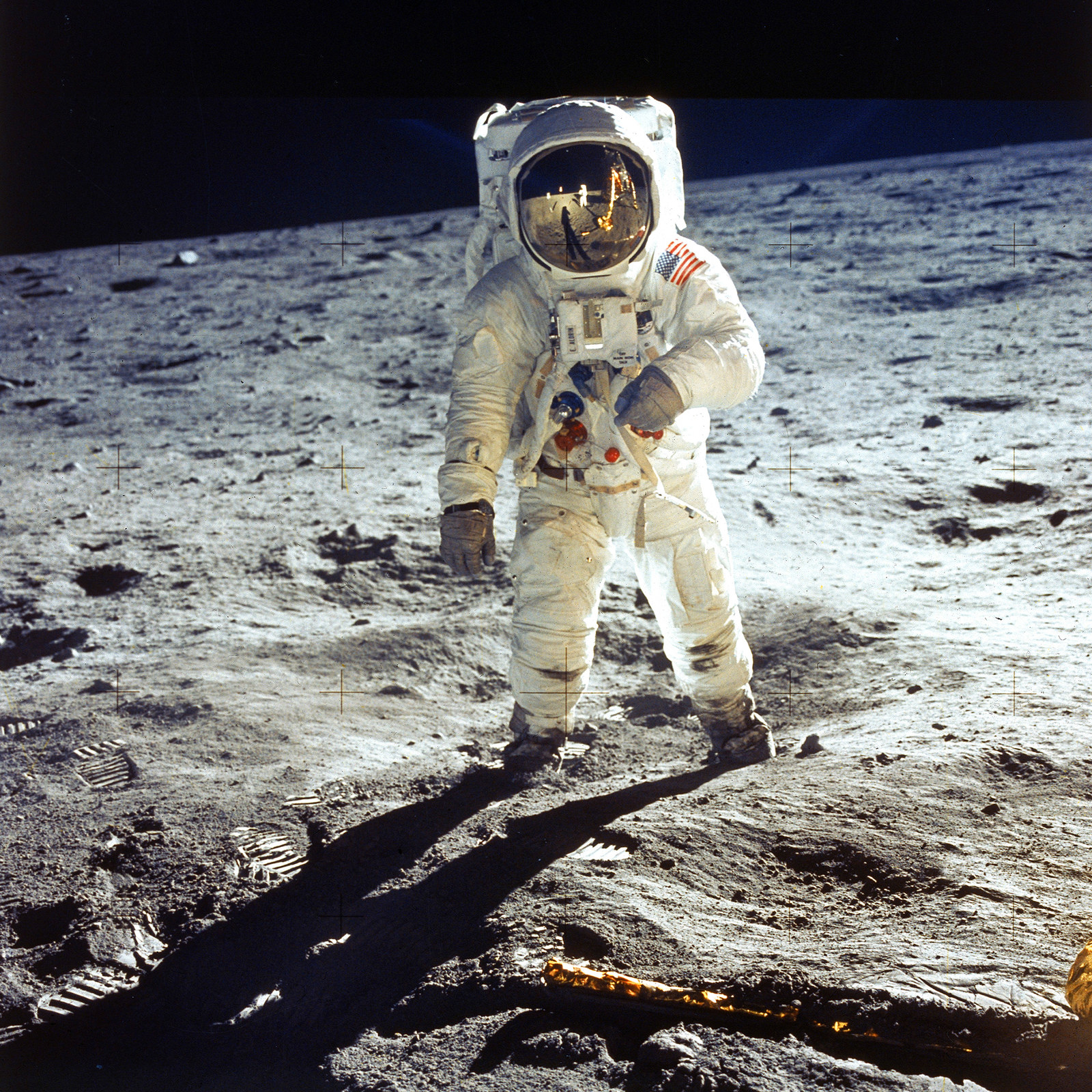
Apollo 11 astronaut Buzz Aldrin is photographed on the moon by astronaut Neil Armstrong.
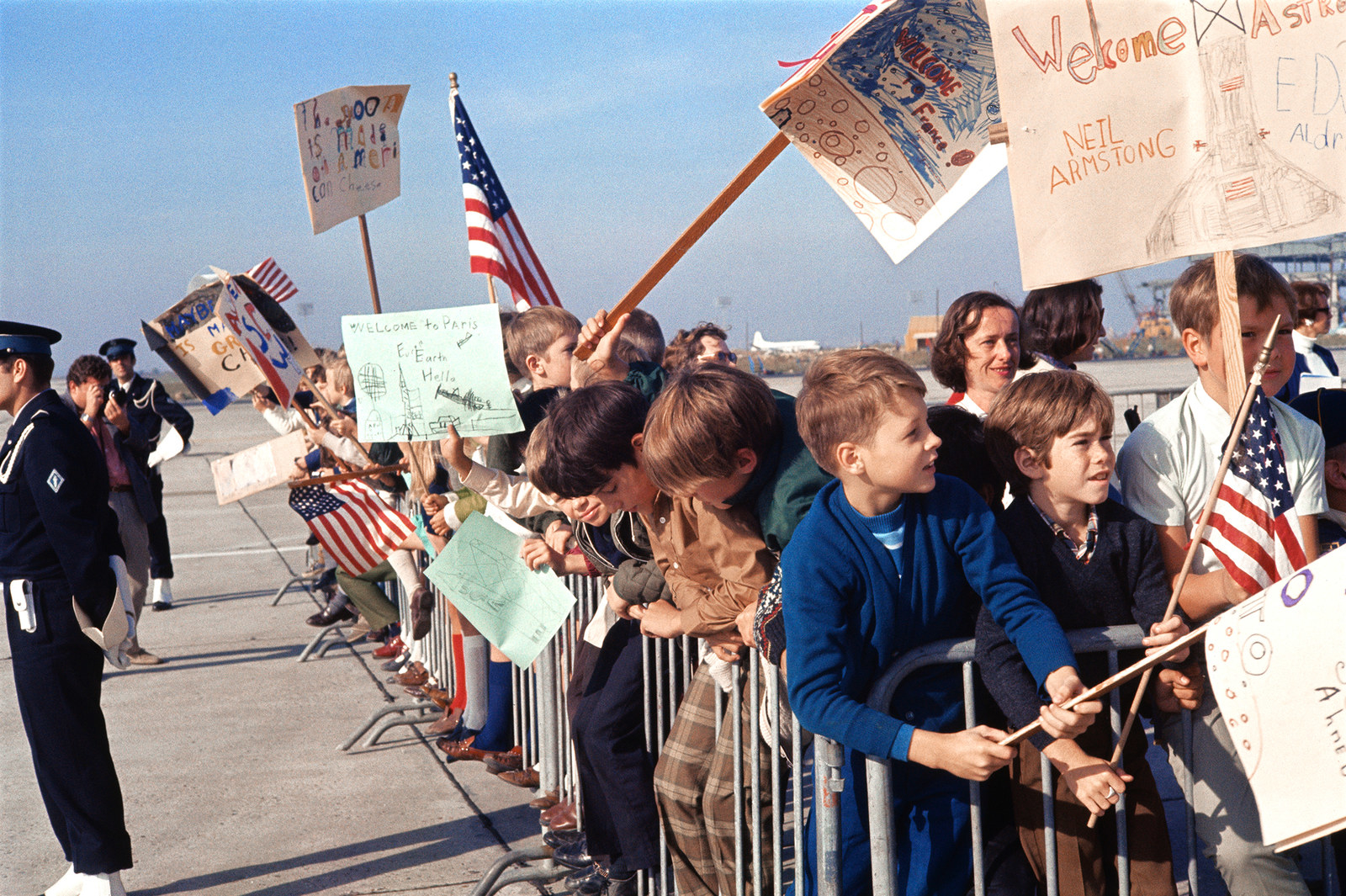
Schoolchildren in Paris wait at the airport for the arrival of the Apollo 11 astronauts, Neil Armstrong, Buzz Aldrin, and Michael Collins.
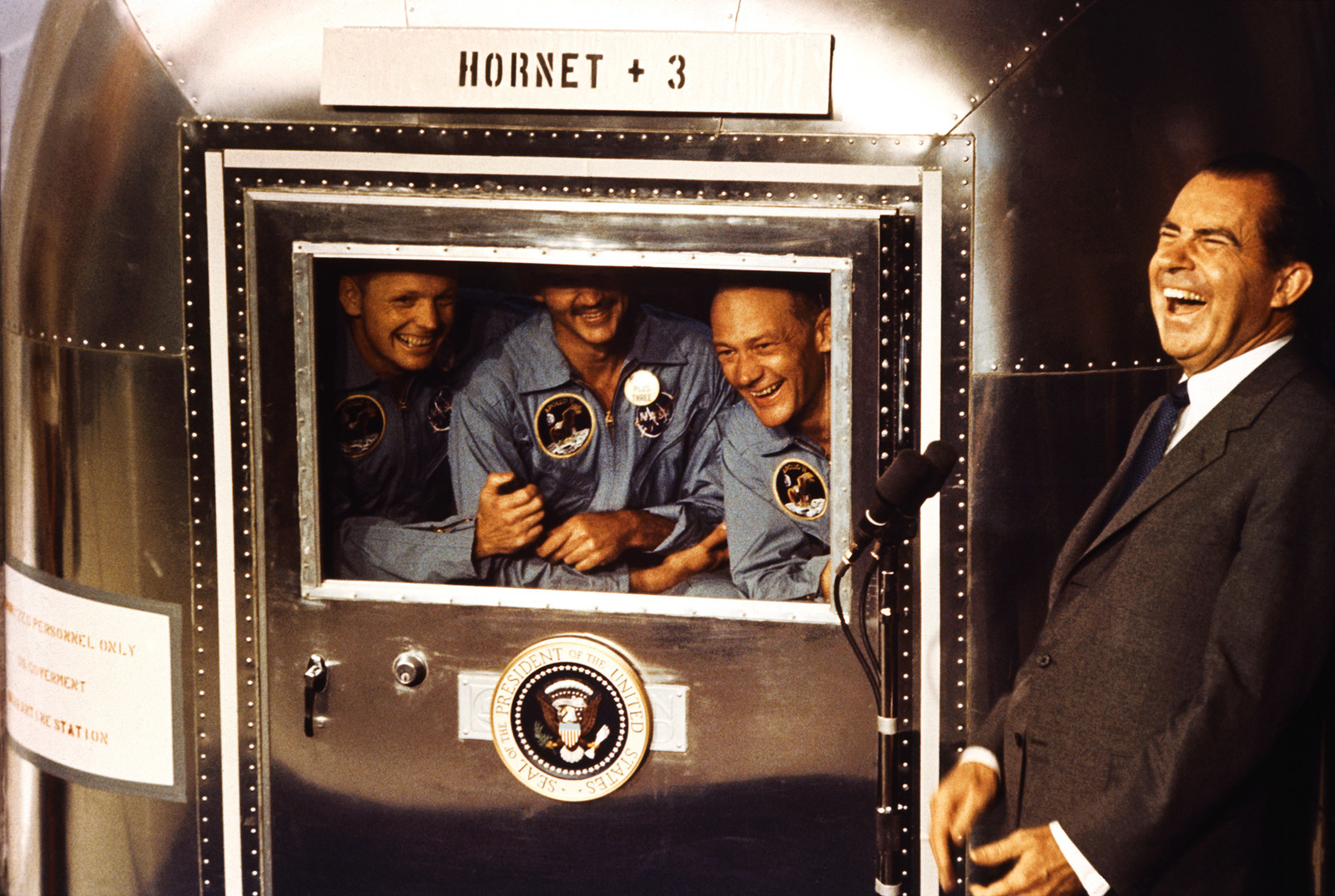
Aboard the USS Hornet aircraft carrier, President Richard Nixon laughs with Apollo 11 astronauts as they exchange greetings through the window of the ship's Mobile Quarantine Facility.

Apollo 11 astronaut Buzz Aldrin's footprint on the surface of the moon in 1969.
Want more? Check out more iconic pictures from the Space Race at Getty Images.